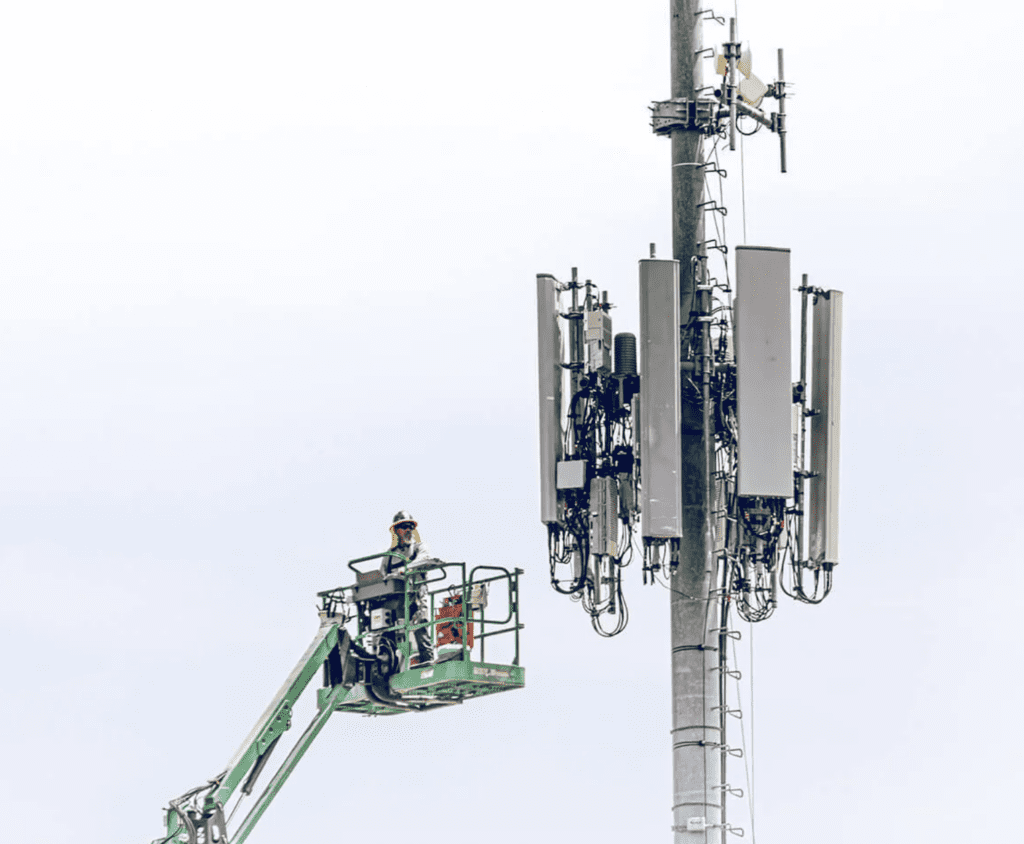
“Our industry is strongly supportive of the deployment and implementation of 5G services nationwide, but we will not compromise aviation safety.” (Photo: NBAA)
Technological development is often seen as the key to an improved future. However, not all new or updated technology comes without logistical challenges when integrating it into pre-existing infrastructure. 5G, the latest in cellular technology, is an advancement that allows for a significant increase in the speed and responsiveness of cellular networks. As 5G is deployed across the nation, it has begun to impact the safety of aviation across the United States.
It appears 5G might be interfering with avionics in aircraft, raising questions regarding the new technology’s ability to safely coexist within aviation. In fact, since January 2022 alone, there have been over 100 reported incidents that could potentially involve 5G interference. The concerns stem from the C-Band of the radio spectrum that carriers Verizon and AT&T purchased for 5G: it sits dangerously close to the band of spectrum radar altimeters on aircraft use for navigation on take-offs and landings.
Given that a majority of the 100 incidents that occurred this year were cockpit safety alerts resulting from radar altimeter impacts associated with 5G, it seems the issue of air travel and 5G coexisting safely is becoming more pressing as the cell network becomes more widespread. Despite this, beyond requiring any operators of regional aircraft to install radio frequency filters on aircraft types most susceptible to interference, it seems the FAA has taken few further steps to mitigate the risk of this new technology on the aviation industry.
Now, a group of aviation stakeholders, including the National Business Aviation Association (NBAA), is pushing the FAA, Department of Transportation, and Department of Commerce to address this growing issue proactively. The goal is to introduce a solution that allows 5G to grow while preventing flight delays and cancellations from becoming prevalent as a result of changing regulations. With only seven months before the next aircraft retrofit deadline, it’s clear these government agencies must take action quickly to prevent complications associated with retrofitting aircraft to meet new regulations.
The coalition of stakeholders, including Thales, Garmin, Embraer, Boeing, Airbus, Collins Aerospace, and many others, published a letter of concerns and requests last week, including the following message:
“We will continue to be committed to finding reasonable solutions that allow implementation of 5G while addressing safety and operational disruptions in the NAS. Stakeholders cannot do this alone and we need the federal government to codify mitigations for all airports and extend the July 2023 and ‘Power Up’ retrofit deadlines. The entire government must work together to ensure future 5G deployment is unencumbered and our aviation system remains the safest in the world. Aviation stakeholders call on the Administration to meet with us to discuss a way forward that will achieve the goal of moving 5G forward, while ensuring passengers and cargo reach their destinations safely and on time.”
Despite the controversy, it seems business aviation is not feeling the impact of 5G to the extent that the commercial sector of the industry is. While the NBAA claims this is because business aircraft do not typically utilize CAT 1 approaches (these rely on radio altimeters, which are vulnerable to interference from 5G), there could be other reasons as to why this segment remains less affected.
For example, aircraft like the Boeing 757, 767, and even certain 737 models have radio altimeters that are deeply integrated with other systems, such as auto throttle, ground proximity warning, and thrust reversers. If the FAA requires changes to radio altimeters, it might be more difficult to make these revisions. While changing requirements could impact various aircraft types differently, this factor could cushion the impacts of 5G for the business aviation segment.
The coalition of stakeholders urging these government agencies to create a solution clearly recognizes the importance of acting proactively in such a dynamic industry. If the FAA, Department of Transportation, and Department of Commerce cannot identify and implement a solution for the 5G challenge before the deadline, the aviation industry could be facing more delays, cancellations, and frustrations.